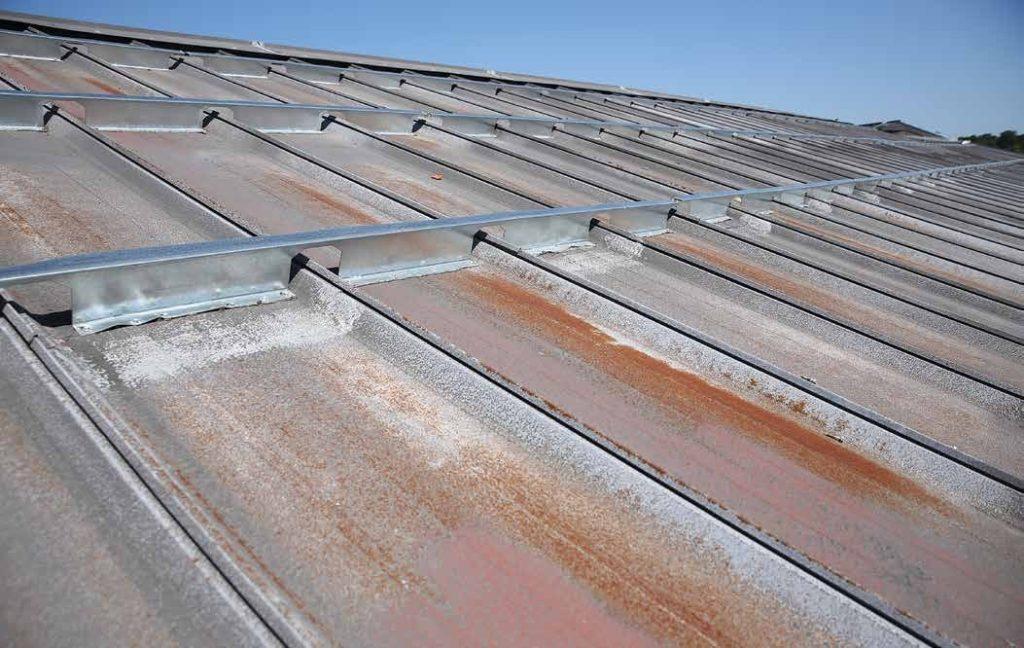When it comes to roofing, durability and longevity are key factors. A metal roof is a popular choice for homeowners looking for a roofing material that can stand the test of time. But what do you do when your old metal roof starts showing signs of wear and tear? Can you put a new metal roof over an old one? In this article, we’ll explore the possibilities and considerations when it comes to layering a new metal roof over an existing one.

The Advantages of Metal Roofing
Metal roofing has gained popularity over the years due to its numerous benefits. It’s known for its longevity, with some metal roofs lasting over 50 years. Additionally, metal roofs are highly durable and can withstand extreme weather conditions, making them a wise investment for homeowners.
The Challenge of an Aging Metal Roof
Over time, even the most robust roofing materials can begin to show signs of aging. This may manifest as rust, dents, or other forms of damage. If you have an older metal roof that’s still structurally sound but showing wear and tear, you may be wondering whether you can simply place a new metal roof on top of the old one to save time and money.
Is It Possible to Layer New Metal Roof Over Old Metal Roof?
The answer to whether you can layer a new metal roof over an existing one is a resounding “yes,” but with some important caveats. There are several key factors to consider before deciding if this approach is right for your situation.
Assess the Condition of the Existing Roof
Before proceeding with layering a new metal roof over an old one, you must assess the condition of the existing roof. The old roof should be structurally sound, with no significant issues like leaks or severe rust. If the existing roof is damaged beyond repair, it’s not advisable to install a new roof on top of it.
Weight Considerations
One of the primary concerns when layering metal roofs is the added weight. You must consult with a structural engineer or roofing professional to determine if your home’s structure can support the additional weight of the new roof. Metal roofs can be heavy, and adding another layer could strain the building’s framework.
Code Compliance
It’s essential to adhere to local building codes and regulations. Some areas have restrictions on how many roofing layers are allowed. Consulting with a local building inspector or a roofing professional who is familiar with local codes is crucial to ensure your project is compliant.
Insulation and Ventilation
Proper insulation and ventilation are crucial to maintaining the energy efficiency and longevity of your roofing system. When adding a new metal roof over an old one, it’s essential to evaluate and update insulation and ventilation as necessary. This can help prevent moisture buildup and ensure your home remains energy-efficient.
Cost Considerations
While layering a new metal roof over an old one can save you money on tear-off and disposal costs, it’s important to understand the full scope of the project’s expenses. This includes the cost of materials, labor, and any necessary structural upgrades or repairs.
The Installation Process
The process of installing a new metal roof over an old one involves several steps:
- Inspection: As mentioned earlier, a thorough inspection of the existing roof is crucial to determine its suitability for layering.
- Structural Evaluation: A structural engineer will assess whether your home can support the added weight and recommend any necessary reinforcements.
- Roof Preparation: The existing roof is prepared by cleaning, repairing, and adding necessary underlayment and insulation.
- New Metal Roof Installation: The new metal roof is then installed over the old one, using appropriate fasteners and techniques.
- Finishing Touches: Flashing, trim, and other finishing elements are added to ensure the roof is watertight.
Conclusion
In summary, layering a new metal roof over an old one is possible but requires careful evaluation. Factors such as the existing roof’s condition, weight capacity, local codes, insulation, ventilation, and costs must be considered. When executed correctly, this approach can prolong your roof’s life, enhance energy efficiency, and save money. Consult roofing experts to ensure compliance with regulations. If you’re considering this option for your aging metal roof, thorough research is essential.



Leave a Reply